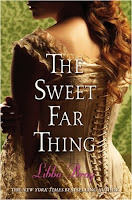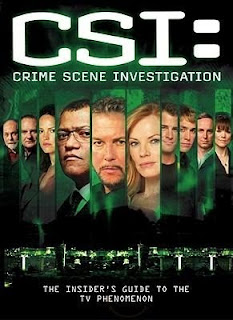In case you haven't heard about the Children's Defense Fund, or the Freedom School initiative, check out their
website and get educated. Freedom Schools is a wonderful summer/after-school program that has one main goal: "to help readers and nonreaders fall in love with books: the stories, the characters, the pictures, the ideas, and the values—and to give nonreaders an overwhelming desire to read, which is a basic step toward reading." The program also aims to provide safe spaces where youth can go after school and during the summer to celebrate literacy and citizenship. Personally, I think the program serves as a very necessary counterstory to the popular discourse surrounding minority youth as readers--"Black kids don't read," "Black kids are lazy," "Black kids don't have books at home, or role-models who read." Blah, blah, blah. These are dangerous lies, and the Freedom Schools serves to poke some crater-sized holes in these lies, showing that Black kids are indeed engaged, skilled readers who are passionate about books!
I had the incredible honor of being a part of the Knoxville Freedom School this summer. I met some incredible youth, some incredible adults, and read some incredible young adult literature. Every year, a committee of bad-asses meets at the
Haley Farm in Clinton, TN, to read and read and read and read and select books for Freedom School (sounds like my kind of retreat). The committee wants Freedom School participants to read whole novels (not excerpted texts), and they want Freedom School kids to read literature that affirms the non-White identities and cultures of Freedom School participants--predominantly Black youth.
The Freedom School kids in grades 6-8 (called Level III scholars) read six young adult novels during the six-week program.

The first novel the Level III scholars read was Sharon G. Flake’s (2007)
Begging for Change. In this book, due to a turf war, 13-year-old Raspberry Hill’s mother has been beaten with a metal pipe, and lies in a hospital. Raspberry’s father is an alcoholic and a drug addict. No wonder Raspberry decides to steal money from her well-off friend, Zora, even if it is Zora and her father, Dr. Mitchell, who treat Raspberry and her mother like family. But Raspberry’s stealing doesn’t stop there, and soon she’s lost the trust of people she cares about most. When her own father steals from her, Raspberry begins to wonder if she’s any different from him. As Raspberry mother tells her and other thugs on the street, “To be better, you gotta want better.” Ultimately, Raspberry must do some hard soul-searching to decide who she’s going to be and what “better” looks like for her.

Next, the scholars read
Joseph by Shelia P. Moses (2008). This young adult novel tells the story of fourteen-year-old Joseph Flood, who is a victim of his mother’s chronic drug abuse. Spending all of the child support money sent by Joseph’s dad, who is away fighting in Iraq, Joseph’s mother lands the two in a homeless shelter. Joseph has the opportunity to go live with his mother’s sister in the suburbs, where he can attend a good school and join the tennis team. But Joseph doesn’t want to leave his mother—who will look out for her? Who will take care of her? Joseph must navigate the slippery slope between loyalty to family and self as he scrapes out a stable future for himself.

For week three, the scholars read another Sharon G. Flake (2005) novel,
Bang! This young adult novel depicts the violence that mars some impoverished urban neighborhoods, and the constant state of terror its residents live in as a result. Mann, the main character, has just seen his little brother, Joseph, shot to death on the front porch of their house—an innocent victim, in the wrong place at the wrong time. Mann’s mother and father are grieving in their own ways, none of which are helpful to Mann, who has started smoking weed with his best friend, Kee-Lee, and skipping school. When Mann’s father decides Joseph got shot because he was “too soft,” he abandons Mann and Kee-Lee miles from town and tells them to find their own way back home. Mann’s journey back to self-hood is fraught with violence, disappointment, mistakes, and regrets, but Mann ultimately decides what kind of man he is going to be, and what it might take for Black men to stop killing one another.

Week four, Level III scholars read Phillip Hoose’s (2009) National Book Award-winning
Claudette Colvin: Twice Toward Justice. This nonfictional work gives voice to the fifteen-year-old girl who refused to give up her seat to a White woman on a segregated bus nine months before Rosa Parks did. But instead of being celebrated, like Rosa Parks was, Claudette found herself shunned by her classmates and ignored by the black leaders of Montgomery, Alabama. Why was Claudette shunned and ignored? Why didn’t she get the credit for jumpstarting the Civil Rights Movement? What did Rosa Parks have that Claudette didn’t? This book answers these questions and elucidates a little-known piece of American history.
For week five, scholars read Sharon Draper’s Coretta Scott King Book Award-winning young adult novel,
Copper Sun, which I've written about
here.

Finally, for the last week of Freedom School, the Level III scholars read David Colbert’s (2009) young adult biography,
Michelle Obama: An American Story. This rich biographical portrait traces Michelle Obama’s life from her ancestors who were slaves on a rice plantation in South Carolina, to her working-class, Southside Chicago childhood, to her rise as one of the most influential women living today. Unique to this biographical telling, Colbert contextualizes Michelle Obama's life story within larger movements in African American history: slavery, freedom, the Reconstruction era, the Civil Rights movement, and finally, her own era.
These are all good reads, and if you're looking to add some African-American YA lit to your classroom library or curriculum, I highly suggest all these titles. Sharon Flake, especially, proved popular with the Freedom School kids--her writing is gritty and real, and doesn't back down from honestly portraying the violence and terror and chaos that defines the lives of too many urban youth.








































